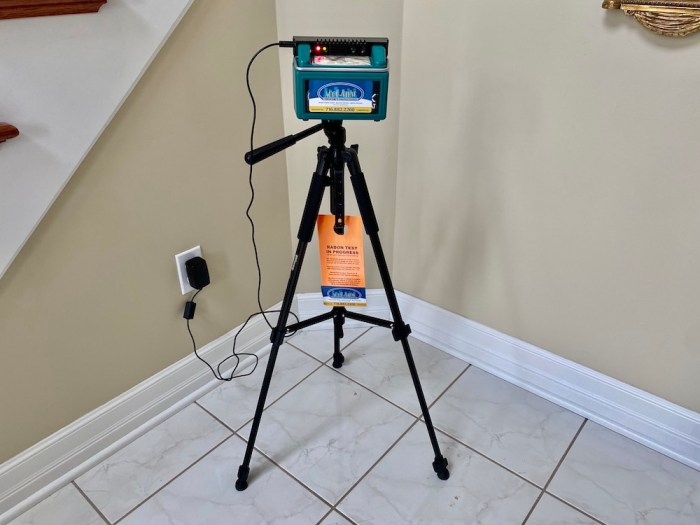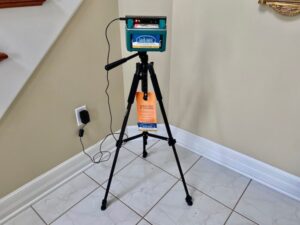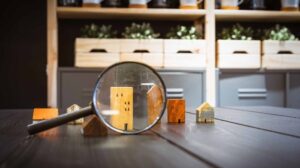
Radon testing in home inspections is a crucial aspect that many homeowners and prospective buyers often overlook. This radioactive gas, which can seep into homes from the ground, poses significant health risks, including lung cancer. Understanding the importance of identifying radon levels during home inspections not only enhances safety but also fulfills legal obligations in some regions, making it a vital part of the home buying process.
With various testing methods available and specific procedures to follow, homeowners can effectively assess radon levels in their environments. From short-term tests that provide quick results to long-term evaluations that offer a comprehensive view of radon exposure, knowing how to conduct and interpret these tests can lead to informed decisions that prioritize health and safety.
Importance of Radon Testing in Home Inspections
Radon testing is a crucial aspect of home inspections that often goes unnoticed but carries significant implications for health and safety. As a naturally occurring radioactive gas, radon is a silent but dangerous presence in many homes. Understanding its importance in the context of home inspections can safeguard the well-being of occupants and ensure legal compliance in certain regions.The necessity of radon testing in home inspections stems from the potential health risks associated with radon exposure.
Long-term exposure to elevated radon levels is linked to lung cancer, making it the second leading cause of the disease in the United States after smoking. The U.S. Environmental Protection Agency (EPA) has estimated that radon is responsible for about 21,000 lung cancer deaths each year. Therefore, incorporating radon testing into home inspections is not just a precaution; it’s a vital step in protecting the health of residents.
Health Risks Associated with Radon Exposure
Radon gas poses several health risks, primarily affecting the lungs. The inhalation of radon and its radioactive decay products can lead to significant health consequences. Here are some key points to consider regarding the health implications of radon exposure:
- Radon is a carcinogen, meaning it can cause cancer after prolonged exposure, particularly in non-smokers.
- Studies have shown that radon exposure increases the risk of lung cancer even at low levels, reinforcing the need for testing.
- The risk of developing lung cancer from radon exposure is significantly higher for smokers; combined exposure can have a synergistic effect.
- Symptoms of radon-related health issues may not appear for years, making early testing crucial for long-term safety.
Legal Requirements for Radon Testing in Certain Regions
Certain regions have established legal mandates requiring radon testing, particularly in areas known to have high radon levels. Understanding these legal requirements is essential for both homeowners and inspectors. The following points Artikel the regulatory landscape regarding radon testing:
- Many states in the U.S. require radon testing during real estate transactions, especially in high-risk areas.
- Some localities mandate the disclosure of radon levels in property listings, emphasizing the importance of testing prior to selling.
- The EPA recommends that all homes be tested for radon, and specific states have their own guidelines that may be more stringent.
- Home inspectors in certain areas must be certified to conduct radon tests, ensuring compliance with local laws and ensuring accurate results.
“Radon testing is essential not just for compliance but for ensuring the health and safety of all home occupants.”
Radon Testing Methods

Radon testing is a critical step in ensuring the safety and well-being of occupants in a home. Understanding the various methods of radon testing can help homeowners make informed decisions about their indoor air quality. This section will cover the different testing methods available, focusing on how they work and their pros and cons.
Different Methods of Radon Testing
There are two primary methods for radon testing: short-term testing and long-term testing. Each method serves a specific purpose and is suited for different scenarios.
- Short-term testing: This method typically lasts from 2 to 7 days and is ideal for quick assessments. Various devices like charcoal canisters, alpha track detectors, and electronic monitors can be used for short-term tests. They are easy to use and can provide immediate insight into radon levels.
- Long-term testing: This method involves monitoring radon levels for a period of 90 days or more. It provides a more accurate representation of radon exposure over time. Devices used for long-term testing include alpha track detectors and continuous radon monitors. Although it takes longer, this method is advantageous for obtaining a comprehensive understanding of radon levels in a home.
Conducting a Short-Term Radon Test
To conduct a short-term radon test, follow these essential steps:
- Choose a testing device that meets EPA standards, such as a charcoal canister or an electronic radon detector.
- Select an appropriate testing location, ideally in the lowest livable area of your home, such as a basement.
- Close all windows and doors for at least 12 hours before starting the test to ensure accurate readings.
- Place the testing device in an elevated position, away from drafts, heating vents, or other sources of air disturbance.
- Leave the test uninterrupted for the duration specified by the testing kit’s instructions.
- After the test period, seal the device as instructed and send it to the laboratory for analysis.
By following these steps, homeowners can effectively assess the radon levels in their homes with a short-term test.
Advantages and Disadvantages of Long-Term Radon Testing
Long-term radon testing has its own set of benefits and drawbacks, making it essential to weigh these factors when deciding how to test for radon.Advantages:
- Long-term tests provide a more accurate assessment of radon levels over time, accounting for fluctuations in daily and seasonal variations.
- Results from long-term tests are crucial for making informed decisions about mitigation strategies if elevated levels are detected.
- Many radon mitigation systems are designed based on long-term data, ensuring the system’s effectiveness.
Disadvantages:
- Long-term testing requires a commitment of at least 90 days, which may not be feasible for some homeowners seeking immediate information.
- Homeowners may experience anxiety waiting for results, especially if they suspect high radon levels could be present.
- The initial cost may be higher than short-term testing, depending on the type of device used and laboratory analysis fees.
“Long-term radon testing is essential for understanding the chronic exposure risks associated with radon in your home.”
Radon Testing Procedures
Conducting radon testing during home inspections is a crucial step in ensuring the safety and well-being of occupants. Proper procedures not only guarantee accurate results but also enhance the credibility of the inspection process. Understanding the right methods and having the necessary tools at hand is essential for effective radon measurement.The radon testing process involves several systematic steps and a checklist of equipment.
Following these guidelines will help in achieving reliable results that can influence home purchasing decisions.
Step-by-Step Radon Testing Procedures
The radon testing process can be executed efficiently by following a structured approach. Here’s a detailed step-by-step procedure:
- Choose the right testing time: Conduct tests during closed-house conditions for a minimum of 48 hours to ensure accurate readings.
- Identify testing locations: Place radon detectors in the lowest livable area of the home, such as basements or crawl spaces.
- Prepare the testing area: Ensure that windows and doors are closed, and advise occupants to minimize activities that could disrupt air flow.
- Set up the radon testing device: Follow the manufacturer’s instructions for positioning and activation of the detector.
- Document environmental conditions: Note the temperature, humidity, and any unusual events during the testing period that might affect results.
- After the test period, retrieve the device: Follow specific guidelines for handling and shipping the device to the laboratory for analysis.
- Review results: Once the lab provides the radon concentration levels, interpret the findings in accordance with EPA standards.
Checklist of Tools and Equipment for Radon Testing
Having the appropriate tools is vital for efficient radon testing. Below is a checklist of necessary equipment to ensure a thorough inspection:
- Radon testing device (short-term or long-term detection kits)
- Environmental monitoring equipment (thermometers, hygrometers)
- Measuring tape (to ensure proper placement of detectors)
- Protective gloves and masks (for safety when handling devices)
- Data recording sheets (to document conditions and findings)
Best Practices for Ensuring Accurate Radon Test Results
To guarantee the validity of radon test results, following best practices is crucial. The following guidelines should be adhered to:
“Closed-house conditions are essential for accurate radon measurements.”
- Conduct tests during winter months when homes are typically sealed tighter, providing better radon concentration readings.
- Ensure all windows and doors remain closed for at least 12 hours before testing begins.
- Place the testing device at least 20 inches above the floor and away from exterior walls to minimize false readings.
- Avoid placing detectors near drafts, heat sources, or air vents where airflow could skew results.
- Follow up with a second test if the initial results are close to the action level set by the EPA.
Interpreting Radon Test Results
Understanding radon test results is crucial for ensuring a safe living environment. Radon levels are measured in picocuries per liter (pCi/L), and interpreting these levels can help determine the necessity for mitigation. Knowing how to read and act on these results can significantly impact health and safety, as prolonged exposure to high radon levels can lead to serious health issues, including lung cancer.To accurately interpret radon test results, one must first understand the action levels established by health organizations.
The United States Environmental Protection Agency (EPA) recommends that homes with radon levels at or above 4 pCi/L should take immediate action to mitigate these levels. Homes with levels between 2 pCi/L and 4 pCi/L are advised to consider taking action, while levels below 2 pCi/L are generally considered acceptable but should still be monitored.
Recommended Action Levels
Various health organizations set specific guidelines for acceptable radon levels. Understanding these levels helps homeowners determine the urgency of addressing radon issues. Here are the recommended action levels:
- Below 2 pCi/L: Generally acceptable; regular monitoring is advised.
- 2 to 4 pCi/L: Consider taking action; options include improving ventilation or further testing.
- Above 4 pCi/L: Immediate action is necessary; professional mitigation services are recommended.
Interpreting the results from different radon testing methods can also provide insights into the implications for your home. Continuous monitors and short-term tests yield different insights, and understanding these differences is vital for effective decision-making.
Comparison of Testing Methods
There are several methods for testing radon levels, each with its own strengths and weaknesses. Below is a comparison of the most common testing methods:
| Testing Method | Duration | Accuracy | Cost |
|---|---|---|---|
| Short-term Tests | 2 to 90 days | Varies, generally less accurate | Low |
| Long-term Tests | 91 days or more | More accurate | Moderate |
| Continuous Monitors | Always active | Highly accurate | Higher |
When comparing results, it is essential to consider the duration of the test and the conditions under which the test was performed. For example, short-term tests can be influenced by weather conditions or ventilation changes, which might not reflect long-term levels accurately. In contrast, long-term tests provide a more comprehensive view of radon levels over a typical season, making them more reliable for determining potential mitigation needs.
Understanding and interpreting radon test results is a critical step in ensuring a safe home environment. Action levels and testing methods provide the framework for making informed decisions regarding radon mitigation.
Home Furniture and Radon Exposure
The arrangement of furniture within a home can significantly influence indoor air quality, including levels of radon gas. Understanding this correlation is essential for homeowners, especially those who are concerned about radon exposure and its health implications. The layout of your living spaces, along with the materials used for furniture, plays a crucial role in either mitigating or exacerbating radon infiltration.A well-planned furniture layout can facilitate better air circulation and reduce potential radon concentration in your home.
It’s important to consider various factors when arranging furniture to optimize indoor air quality. Below are some specific strategies and material choices that can help minimize radon exposure.
Furniture Arrangements to Mitigate Radon Exposure
Effective furniture arrangement can promote airflow and help reduce radon accumulation. Here are some recommendations:
- Keep furniture away from walls, especially those that are in contact with the ground. This creates space for air to circulate, reducing the chances of radon buildup.
- Avoid placing heavy furniture directly over slabs or crawl spaces. This can create pressure points that may draw radon gas into the living area.
- Consider the use of furniture with legs instead of solid bases. This allows air to flow underneath, further aiding in ventilation.
- In finished basements, arrange furniture to avoid blocking vents and openings, ensuring that air can circulate freely.
Materials That Help Reduce Radon Infiltration Indoors
Certain materials can act as barriers to radon infiltration, helping to maintain a safer indoor environment. Here are some effective options:
- Use solid wood or composite furniture with sealed edges to minimize gaps where radon could enter.
- Consider utilizing furniture made of metal or glass, which do not absorb radon gas and can be easier to clean and maintain.
- Incorporate air-purifying plants, which can help to absorb harmful gases and improve overall air quality.
- Use carpets and rugs made from low-emission materials to prevent additional pollutants from entering the space.
“An effective layout and the right materials can significantly reduce radon exposure and improve indoor air quality.”
By implementing thoughtful furniture arrangements and selecting appropriate materials, homeowners can create a safer living environment that minimizes the risks associated with radon exposure. These strategies not only contribute to health but also enhance the overall comfort and aesthetics of the home.
Green Living and Radon Awareness
Creating a sustainable living environment goes hand-in-hand with ensuring the health and safety of your home. One of the lesser-known aspects of green living is the importance of being aware of radon levels within your home. Radon, a naturally occurring radioactive gas, can accumulate in homes and pose serious health risks. By integrating radon awareness into your green living strategy, you can make more informed decisions about your home environment while promoting energy efficiency.Energy-efficient home design is increasingly recognized for its ability to reduce utility costs and environmental impact.
However, it’s essential to understand how these designs can interact with radon levels in your home. Homes designed with airtight construction methods and advanced insulation techniques can unintentionally trap radon gas. This means that while you’re reducing energy consumption, you could also be contributing to higher concentrations of radon indoors.
Maintaining a Green Living Environment with Radon Mitigation
Combining sustainable practices with effective radon mitigation is crucial for maintaining a healthy home. Here are some strategies to consider:
- Ventilation Improvements: Implementing proper ventilation systems can help dilute radon concentrations. Energy recovery ventilators (ERVs) are particularly effective as they provide fresh air while recovering energy from stale air.
- Sealing Cracks and Openings: Sealing foundation cracks and openings in walls can reduce radon entry points. Use eco-friendly sealants to maintain a sustainable approach while addressing radon issues.
- Utilizing Natural Materials: When building or renovating, consider using radon-resistant construction materials. Natural materials can help minimize radon accumulation and align with your green living ethos.
- Regular Testing: Implementing routine radon testing is an essential part of home maintenance. Using eco-friendly testing kits ensures that you’re continuously aware of radon levels without compromising your commitment to sustainability.
Incorporating these strategies into your green living plan not only mitigates radon risks but also enhances the overall quality of your home environment. By focusing on both energy efficiency and radon awareness, you can create a safer, healthier living space while staying committed to sustainability principles.
“A sustainable home is not just about energy efficiency; it’s also about maintaining a safe and healthy indoor environment.”
Combining green living practices with effective radon management allows homeowners to take charge of their spaces while promoting wellness and sustainability. Understanding the dynamics between energy-efficient designs and indoor air quality is key to achieving this balance, ensuring that your home remains a sanctuary for you and your family.
Heating and Air Conditioning Systems in Relation to Radon
Heating and air conditioning (HVAC) systems play a crucial role in maintaining indoor air quality and comfort levels in homes. However, these systems can inadvertently influence radon levels, a colorless and odorless gas that poses significant health risks. Understanding the relationship between HVAC systems and radon is essential for homeowners looking to minimize exposure to this harmful substance.HVAC systems can affect radon levels by either increasing or decreasing the concentration of radon in the home.
Improper ventilation can lead to higher radon levels, while effective air circulation can help reduce them. Adequate airflow can help disperse radon gas and prevent it from accumulating in enclosed spaces. Conversely, if an HVAC system is not functioning properly, it may worsen radon issues by creating negative pressure, drawing radon from the ground into the living areas.
Maintenance Tips for HVAC Systems to Minimize Radon Entry
Regular maintenance of HVAC systems is essential to ensure they operate efficiently and minimize radon entry. Here are some vital maintenance tips to keep in mind:
- Conduct regular inspections of the HVAC system to ensure that all components are functioning properly, including filters, ducts, and exhaust fans.
- Ensure all vents are unblocked and free from debris to allow for proper airflow, which helps in reducing radon accumulation.
- Replace air filters as recommended by the manufacturer to maintain optimal air quality and system efficiency.
- Schedule professional maintenance checks at least once a year to identify any potential issues that could exacerbate radon levels.
- Consider installing a radon mitigation system in conjunction with your HVAC system if radon levels are found to be elevated.
Signs That HVAC Systems May Be Exacerbating Radon Problems
Identifying signs that your HVAC system may be contributing to radon problems is critical for ensuring a safe living environment. Look out for the following indicators:
- Consistent high radon levels during testing, even after mitigation efforts have been made.
- Unusual drafts or cold spots in certain areas of the home, which may indicate poor air circulation and increased radon entry.
- Increased dust or particulates in the air, suggesting that the HVAC system is not filtering effectively.
- Frequent repairs or maintenance issues with the HVAC system, indicating it may not be operating as intended.
- Presence of moisture or mold, which can signal inadequate ventilation and increased radon levels.
Role of Home Inspections in Radon Awareness

Including radon testing in home inspections plays a crucial role in ensuring the safety of occupants. Radon is a colorless, odorless gas that can lead to serious health issues, making its detection vital for homeowners. Home inspectors serve as the frontline professionals who can effectively raise awareness about radon risks and promote proactive measures to mitigate exposure.Home inspectors are uniquely positioned to communicate the potential dangers of radon to clients during the home buying process.
They can inform clients about the significance of radon testing, interpret the results, and recommend next steps if elevated levels are found. This creates an informed customer base that understands the implications of radon exposure.
Framework for Communication of Radon Risks
Establishing an effective communication strategy is essential for home inspectors to relay radon risks to clients. The following points highlight key aspects of this communication framework:
- Educate Clients on Radon: Provide clear, concise information on what radon is, how it enters homes, and its associated health risks.
- Present Testing as Standard Practice: Emphasize that radon testing should be a routine part of home inspections, similar to electrical or plumbing evaluations.
- Use Visual Aids: Incorporate charts, graphs, or infographics to visually represent radon levels and health statistics, making the information more digestible.
- Discuss Local Radon Levels: Share data specific to the area, highlighting that certain regions have higher radon risks, influencing the need for testing.
- Encourage Follow-Up Actions: If radon levels are detected, guide clients on the steps to take, including remediation options and local resources.
Case Studies Illustrating Impact of Radon Testing
Real-life examples can significantly enhance the understanding of radon testing’s importance. Here are some illustrative case studies that showcase the positive impact of radon testing during home inspections:
- Case Study 1: A family moving into a new home in a high-radon area opted for a radon test during the inspection. The results revealed elevated radon levels, prompting the family to implement a mitigation system before taking occupancy. This proactive measure likely saved them from long-term health risks associated with prolonged radon exposure.
- Case Study 2: In another instance, a couple purchased a home without conducting a radon test. After experiencing health concerns, they later tested the property and found dangerously high radon levels. This situation underscored the importance of radon awareness and testing, as the couple faced significant health challenges and remediation costs post-purchase.
- Case Study 3: An inspector informed a first-time homebuyer about the necessity of radon testing. The buyer, initially skeptical, agreed to the test and discovered high levels of radon. The successful mitigation process not only made the home safer but also educated the buyer about ongoing radon monitoring.
House Plans and Radon Prevention
Incorporating radon prevention strategies into house plans is essential for ensuring the safety and well-being of occupants. By considering radon mitigation measures during the design phase, homeowners can significantly reduce the risk associated with radon exposure. This proactive approach not only enhances the health of residents but also adds value to the property in the long run.The importance of site selection for new home construction is crucial, particularly in areas known for higher natural radon levels.
Understanding the geological and environmental factors influencing radon concentration can guide builders in making informed decisions that minimize radon risk.
Site Selection and Radon Levels
Choosing the right location for a new home is pivotal in radon prevention. Certain geographical areas have a higher potential for radon accumulation due to the underlying soil and rock types. Here are some considerations for site selection:
- Geological Survey: Conducting a geological survey of the site can reveal radon risk levels, providing data on the soil composition and radon potential.
- Placement of the Home: Situating the home on a higher elevation or away from radon-emitting rock formations can reduce indoor radon levels.
- Drainage Considerations: Ensuring proper drainage and maintaining a dry foundation can limit radon entry, as moisture can enhance radon infiltration.
- Ventilation Assessment: Choosing a site that allows for effective ventilation can create a healthier indoor environment, countering radon levels.
Architectural Solutions to Reduce Radon Entry
Implementing specific architectural designs can further assist in radon prevention. Here are effective strategies:
- Passive Radon Systems: Incorporating passive systems like vent pipes and gravel layers beneath the foundation helps guide radon gas away from the home.
- Sealing Cracks and Openings: Designing with fewer seams and joints minimizes entry points for radon. Sealing cracks in foundation walls and floors is vital during construction.
- Slab-on-Grade Foundations: A slab-on-grade foundation minimizes the contact of radon with living spaces, as it limits the interaction of soil gases with the home’s interior.
- Basement Ventilation: Planning for proper basement ventilation can help dilute radon concentrations and improve air quality.
Designing homes with built-in radon mitigation strategies not only improves health outcomes but also enhances property value and marketability.
Incorporating these design principles and site considerations in house plans can lead to safer living environments. Through careful planning and execution, radon exposure can be effectively managed, protecting families and promoting healthier communities.
Concluding Remarks
In summary, incorporating radon testing into home inspections is not just a regulatory requirement but a necessary step in safeguarding health. By understanding the testing procedures, interpreting results accurately, and recognizing the impact of home designs and systems, homeowners can take proactive measures against radon exposure. This knowledge empowers individuals to create safer living environments while also fostering awareness of radon risks among their communities.
FAQ Summary
What is radon and where does it come from?
Radon is a naturally occurring radioactive gas that originates from the decay of uranium in soil, rock, and water. It can accumulate in homes, particularly in enclosed spaces like basements.
How often should radon testing be conducted?
It’s recommended to test for radon every two years or after significant home renovations, as changes can affect radon levels.
Can radon levels change over time?
Yes, radon levels can fluctuate based on various factors including weather conditions, home ventilation, and soil conditions.
Are there specific tools needed for radon testing?
Common tools include radon test kits, which can be purchased for DIY testing, as well as professional equipment for more thorough assessments.
What should I do if my home has high radon levels?
If high levels are detected, it’s important to consult a professional for radon mitigation strategies to reduce exposure.





